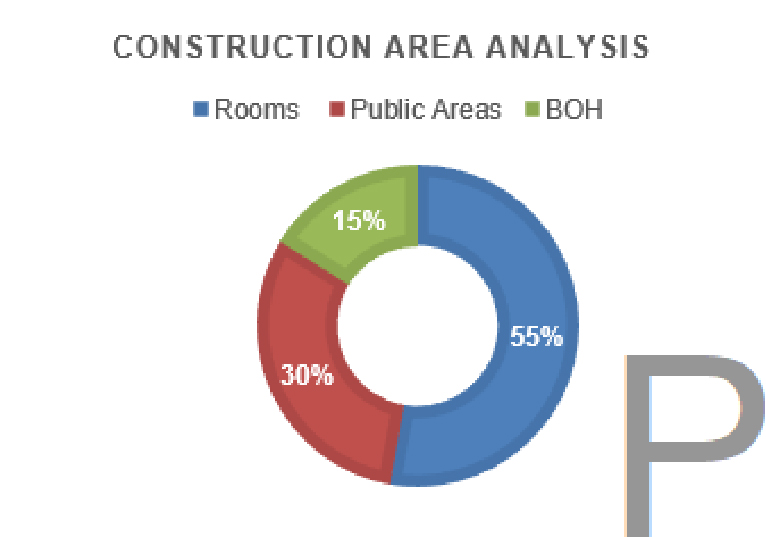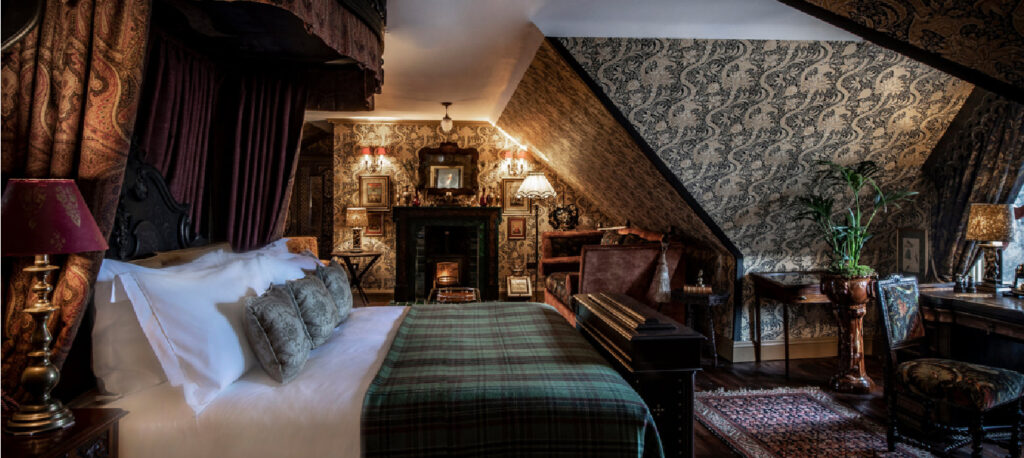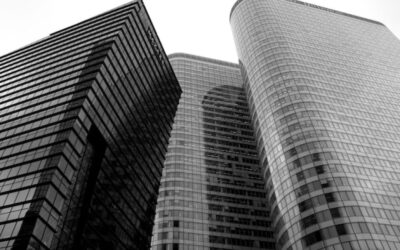Accor. Marriott International. Hilton Worldwide. InterContinental. Hyatt.
Why are these some of the largest and most successful hotels in the world?
It all starts with design economics.
Design Economics refers to design solutions influenced by a range of principles that balance economic factors. When it comes to a hotel, a lot of thought, effort and factors are considered for the design concept before it is even presented to a professional team.
What makes a hotel’s development and design so unique?
- It has a hotel brand standard and needs to comply with specific spacial allocation, look and feel, the performance of material and equipment as well as guarantees and warranties
- FFE: Furniture, Fixtures, and Equipment. In architecture and interior design, FF&E typically encompasses all movable or easily removed objects in a building, not including sellable products. FF&E is often not supplied by the general contractor but may be installed by them.
- OSE – Operating Supplies and Equipment is a specialised item that requires expert input
- There are Operators to take into consideration as they also have design wishes (Eg Radisson / IHG, Hilton, Accor)
- Client budgets – often do not tie up with the operator’s requirements
All of these items need to be carefully managed and designed in order to create a successful hotel development. Obtaining cost advice throughout each phase of the design and construction further ensures the best value is achieved through challenging specifications, sourcing alternative finishes, and implementing value engineering processes.
Design Concept & Components
There are seven design components that all work interconnected to ensure an ergonomic design:
- The Story
- The People
- The Space
- The Identity
- The Services
- The Content
- The Channels
1. The Story
The story is where it all begins. It is the concept that defines the role that the hotel will fulfil. A story consists of the hotel’s market segment, location, infrastructure, staff and management.
For example, The InterContinental Hotel in Lusaka has a story focused on copper as this is one of Zambia’s biggest exports. Dexter Moren Architects made sure to incorporate this in their design of the hotel. The look and feel of the front-of-house areas are all designed around the story. The hotel’s bar is even named The Copper Bar.
2. The People
This component consists of employees, guests, partners, investors, etc. Together, they bring the concept together.
3. The Space
The space refers to a lot more than just the interior. It relates to the physical makeup of the hotel. This would mean the room sizes, the front and back of house areas – these should all be designed in such a way that they are proportionate to their functionality and to the role they fulfil to generate income for the client. The BOH can not take up 50% of your GBA – this is a supplementary area complimenting the rooms and FOH but it can not generate income on its own. That is why it is crucial to design a BOH as small as possible but still functional to serve its purpose.
Fig 1. Typical Construction Area Analysis of a Hotel

Fig 2. Hotel Room Size Efficiency

4. The Identity
The Identity component consists of all the graphic, verbal and sensorial aspects of a hotel concept. For example, the artwork in the hotel, signage, the website layout and even the hold music. Each of these items creates your identity, all of which the customer would experience and remember.
The Fife Arms Hotel is a luxury hotel in the Scottish Highlands, housed in a restored Victorian coach inn. It boasts a consistent identity across all touch points and a story about connecting heritage, hospitality and contemporary art. Everything from their website to their luggage labels has been designed or curated to fit with the hotel concept. The hotel even created its very own Scottish tartan, used for staff uniforms and bed covers. (https://www.hospitalitynet.org/opinion/4103300.html)
Fig 3 & 4. The Fife Arms Hotel

5. The Services
This component consists of the hotel’s services offering. From the food and beverage facilities, and WiFi, to on-site services such as spas, golf courses or gyms, to hot water, tennis courts and clean linen. All of these services help enrich the customer experience as a whole and must be considered when designing.
6. The Content
Content ensures customer engagement. Therefore the focus needs to be on how this can be done and maintained.
7. The Channels
Channels to broadcast your story. These could be in the form of your website or social media channels.
ELEMENTS IN DESIGN THAT CONTRIBUTE TO HIGH-COST FACTORS IN HOTEL DEVELOPMENTS
The cost consultant would have extensive knowledge of the major cost drivers of hotel development. These items include:
- The position and details of the site
- The location of the site – access and visibility
- The position of the hotel itself in the development
- The external facades of the building (glazing especially)
- The specification of services – HVAC, Electrical, Fire etc
- The design and size of the front of the house, back of the house and room areas
THE BENEFITS OF OBTAINING COST ADVICE THROUGHOUT EACH STAGE OF THE DEVELOPMENT LIFECYCLE
Stage 1 – Inception
Establish the client requirements and preferences, assess user needs and options, the appointment of necessary consultants, and establish the project brief including project objectives, priorities, constraints, assumptions, aspirations and strategies.
Stage 2 – Concept & Viability
- Prepare and finalise the project concept in accordance with the brief including the scope, scale, character, form, function, development programme and viability of the project Obtaining cost advice from the onset of a project assists in making the correct choices from the earliest point of a project and could potentially avoid any redesign or value engineering at a later stage
- The cost consultant would assist in developing an Order of Magnitude estimate which would determine the total cost of the development
- This document would give an idea as to the design and space allocation of the rooms, the front and back of house areas, and whether these are within acceptable margins or not
- The cost consultant would be able to advise if any work needs to be done on the design. If the gross area per key of a midscale hotel is 90m²/key, they would know that it should be around 65m²/key. Meaning there is 25m²/key of the area that is being developed or built but resulting in no profitable return for the client.
Stage 3 – Design Development
- Develop the approved concept to finalise the design, outline specifications, cost plan, financial viability and documentation programme for the project Once the concept Order of Magnitude estimate is approved as the baseline by the client, the cost consultant can then assist to prepare a more detailed development cost.
- This would be done by compiling Elemental Cost Plans using local, in-country tendered rates to get to a more accurate costing
- Having actual costs available allows the cost consultant to compare his budgets against what was originally presented, and to determine if any value engineering or further design development needs to take place
Stage 4 – Documentation and Procurement
- Prepare the construction and procurement documentation, confirm and implement the procurement programme, strategies and procedures for effective and timeous procurement of necessary resources for the execution of the project
- Having an experienced cost consultant on board is relevant to the following activities:
- Assisting with the tender documentation – to ensure it is in line with the brand standards and costs previously presented
- Advising on the best contractors suitable in the country and ensuring that these contractors have the required (hotel) experience and portfolio. This is important – if the development is for a luxury hotel, one would want extremely suitable and capable contractors that come at the right price
- Advising on the most suitable tender route
- Ensuring tender drawings are in line approved in Stages 2 and 3
- Evaluating the tender submissions, prices, budget comparisons and tender recommendations
Stage 5 – Construction
- Manage, administer and monitor the contracts and processes, including the preparation and coordination of the procedures and documentation to facilitate the practical completion of the works
- This part of the development is where the cost consultant would need to manage the contractor as well as the client’s budget simultaneously
- This would involve identifying when any variation orders or contractual claims need to be approved as a result of specification changes or design changes
Stage 6 – Close Out
Fulfil and complete the project close-out including the preparation of the necessary documentation to facilitate effective completion, handover and operation of the project
THE FUTURE OF DESIGN ECONOMICS
With the ever-growing population and the development of trends such as eco-friendly, fitness, veganism, boomers and millennials, how does one stay innovative within the hospitality sector that already has many brands and operators under its portfolio? The reality is that the needs of the target markets are changing. Extracted from the article by Rob Sykes:
Trends of the last five years include themes such as the rise of ‘localized’ design, trendy independent ‘lifestyle’ hotels and animated public areas.
We do not see a future in robot services and virtual reality experiences.
First-class hospitality will always require the ‘human touch’. Particularly true of resorts, consumers will increasingly seek to reconnect with nature, spend quality time with loved ones and return to ‘the simple life’.
Further to the above, the need for environmentally friendly and ‘green’ developments and buildings is constantly on the rise. Perhaps the future of design economics lies therein, where design has more of an impact than just aesthetics, where design can lower the impact on the environment, and where the design enriches the consumer experience as a whole.
IN SUMMARY
It is vital to understand the relationship between the design and the costs of the hotel, as well as the benefit of obtaining cost advice from the onset of development and throughout. The cost consultant has an understanding of the market, the design elements and ratios, the construction methods, materials and prices and is, therefore, a key member of any professional team. The cost consultant is also in a valuable position as they are essentially the link between the client, the contractor and the professional team, thereby providing a beneficial relationship to hotel development.

EQUATE SERVICE OFFERING
Changes in lifestyle and living standards mean people expect to have access to a diverse range of leisure facilities, be they business, sport, entertainment or social activities. Increasingly, leisure sector developments are not stand-alone projects and across the African continent, they are often part of a mixed-use development providing/creating a destination for the leisure or business traveller with an increase in dual-branded and long-stay hotel offerings. The success of a hotel and leisure facility can have a far-reaching impact on the surrounding community, economy, and society. The adoption of technology and green initiatives are the key drivers for international branded hotel operators to achieve their Environmental, Social, and Governance (ESG) mandates.
EQUATE is the leader in African leisure and hospitality development with extensive experience in this sector. We have provided quantity surveying services in 23 countries in Africa and the Middle East, mostly with Internationally Branded Hotel Operators. A wealth of knowledge and expertise has been captured and packaged to provide our clients with the best advice and solutions for their development. We understand the design economics, value and cost drivers of hotel and leisure projects and are able to assist clients and design teams to develop the most optimum product based on design, brand requirements, efficiency, technology, sustainability and life cycle. With our vast amount of actual construction cost data across the continent, we can provide accurate cost input to our clients irrespective of the location, the product or the client’s ambitions.
REFERENCES:
- https://www.hospitalitynet.org/opinion/4103300.html
- https://hospitalityinsights.ehl.edu/hotel-innovative-design
- AECOM – Hotel Design Economics Brochure Finals
- PROCSA




